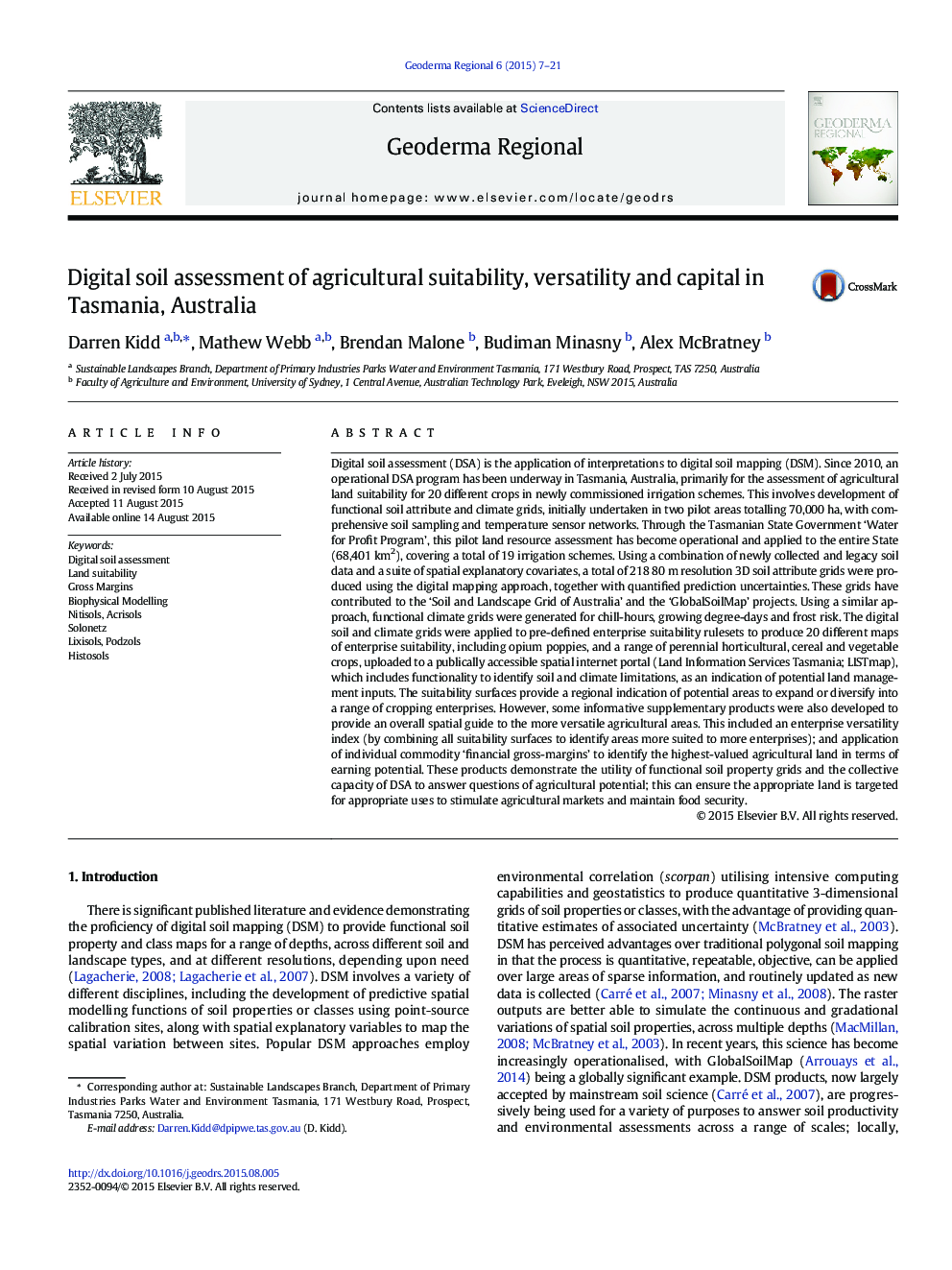| Article ID | Journal | Published Year | Pages | File Type |
|---|---|---|---|---|
| 4480779 | Geoderma Regional | 2015 | 15 Pages |
•Digital soil assessment for land suitability was piloted in new irrigation schemes in Tasmania.•This pilot was expanded to cover the whole State of Tasmania, at 80 m resolution.•Digital Soil and Climate grids produced land suitability for 20 crops.•An Agricultural Versatility map was produced by combining all crop ratings.•Economic Gross Margins Analysis produced spatial estimates of potential value.
Digital soil assessment (DSA) is the application of interpretations to digital soil mapping (DSM). Since 2010, an operational DSA program has been underway in Tasmania, Australia, primarily for the assessment of agricultural land suitability for 20 different crops in newly commissioned irrigation schemes. This involves development of functional soil attribute and climate grids, initially undertaken in two pilot areas totalling 70,000 ha, with comprehensive soil sampling and temperature sensor networks. Through the Tasmanian State Government ‘Water for Profit Program’, this pilot land resource assessment has become operational and applied to the entire State (68,401 km2), covering a total of 19 irrigation schemes. Using a combination of newly collected and legacy soil data and a suite of spatial explanatory covariates, a total of 218 80 m resolution 3D soil attribute grids were produced using the digital mapping approach, together with quantified prediction uncertainties. These grids have contributed to the ‘Soil and Landscape Grid of Australia’ and the ‘GlobalSoilMap’ projects. Using a similar approach, functional climate grids were generated for chill-hours, growing degree-days and frost risk. The digital soil and climate grids were applied to pre-defined enterprise suitability rulesets to produce 20 different maps of enterprise suitability, including opium poppies, and a range of perennial horticultural, cereal and vegetable crops, uploaded to a publically accessible spatial internet portal (Land Information Services Tasmania; LISTmap), which includes functionality to identify soil and climate limitations, as an indication of potential land management inputs. The suitability surfaces provide a regional indication of potential areas to expand or diversify into a range of cropping enterprises. However, some informative supplementary products were also developed to provide an overall spatial guide to the more versatile agricultural areas. This included an enterprise versatility index (by combining all suitability surfaces to identify areas more suited to more enterprises); and application of individual commodity ‘financial gross-margins’ to identify the highest-valued agricultural land in terms of earning potential. These products demonstrate the utility of functional soil property grids and the collective capacity of DSA to answer questions of agricultural potential; this can ensure the appropriate land is targeted for appropriate uses to stimulate agricultural markets and maintain food security.
